You’re never far from history, or good food, as you cruise Virginia’s James River.

From its headwaters deep in the Blue Ridge Mountains to its broad mouth just past Hampton Roads, the 340-mile-long James River flows through some of the most historic and beautiful countryside anywhere on the East Coast.
Few people know the character of the river better than Jamie Brunkow. Jamie spent many childhood years on the James River, and for the past eight years has served as the James River Association’s Riverkeeper.
Whether by kayak, canoe, jon boat, powerboat, or sailboat, Jamie figures he’s covered most of the river’s impressive length and explored its many scenic byways, as his duties take him all over the watershed in his role as chief advocate for the health of this important American waterway.
“This is an amazing stretch of water,” the soft-spoken 35-year-old Virginia Tech graduate tells PropTalk. “It’s hard to believe there is so much diversity on the water. Parts of the middle river are unchanged from the earliest times of European exploration. Other parts showcase some of Virginia’s most prestigious plantations. Hopewell has come a long way from its days as a major polluter… and Richmond provides the cruiser with a pleasant sojourn away from the water with a large dose of history and gourmet cuisine.”

Getting the lowdown from Jamie on where to go and what to see on the James River is like jumping into his official riverkeeper launch and making the 100-mile journey from the river’s mouth to Richmond in the company of a man telling us about his best friend.
“It’s a joy to go to work every day,” he says. “This river has come a long way from the days when it wasn’t safe to eat the fish swimming in its waters. Today, we are proud to be the cleanest river flowing into the Chesapeake. It’s taken a lot of hard work and public/private cooperation, but we were pleased to have been awarded the Thiess International Riverprize Award, the world’s foremost award in river basin management last year.”
The James River Association was formed in 1976 right after it was discovered that a local chemical company was illegally dumping a toxic chemical into the river. Since that time, aided by public and private efforts, the river has battled back and today is a leader in environmental stewardship, community engagement, and policy enforcement.
So buckle up your PFD, pop open your beverage of choice, open up the association’s terrific interactive river guide at thejamesriver.org/explore-the-james/james-river-map, and get ready to explore the James River.
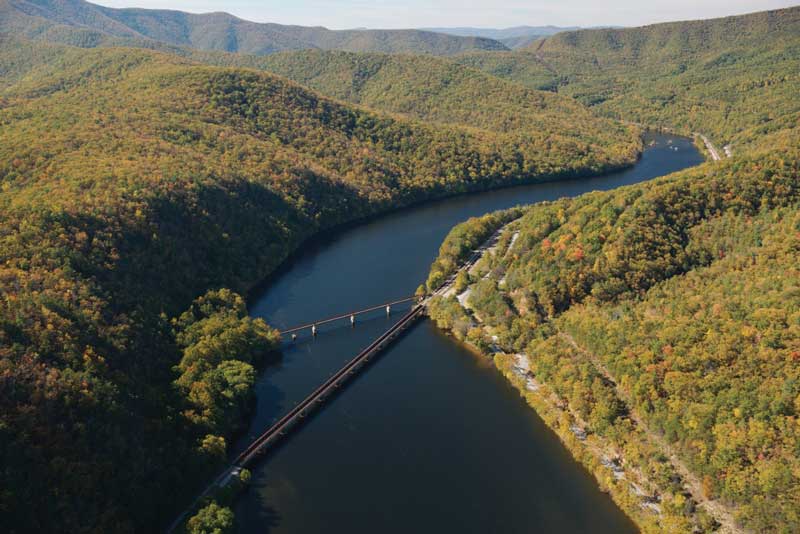
“It’s a bit of a boat rodeo as you leave Hampton Roads, but once you get under the James River Bridge, things flatten out with less boat traffic and great opportunities to poke around and explore,” says Jamie.
“Just past Mulberry Island around Ft. Eustis, we’ll pass over thousands of acres of oyster beds, probably one of the largest concentrations of oysters on the East Coast. Keep your eyes peeled for tongers… that’s the only way locals can gather their oysters. It’s a big part of life on the James.”
Jamie tells PropTalk that trip up the Pagan River just across from Mulberry Island is worth the time it takes to head off the river proper. “Smithfield is a quaint little town. You can tie up at Smithfield Station, stroll into town, and have an ice cream or a cup of coffee at one of Smithfield’s many cafes, coffee shops, and eateries.”
Smithfield has many of the charms associated with Hampton Roads communities, including 18th and 19th Century architecture, a revitalized historic downtown, and all the character of a former colonial seaport. According to the Virginia Landmarks Register, Smithfield is “perhaps the best preserved of Virginia’s Colonial seaports.”
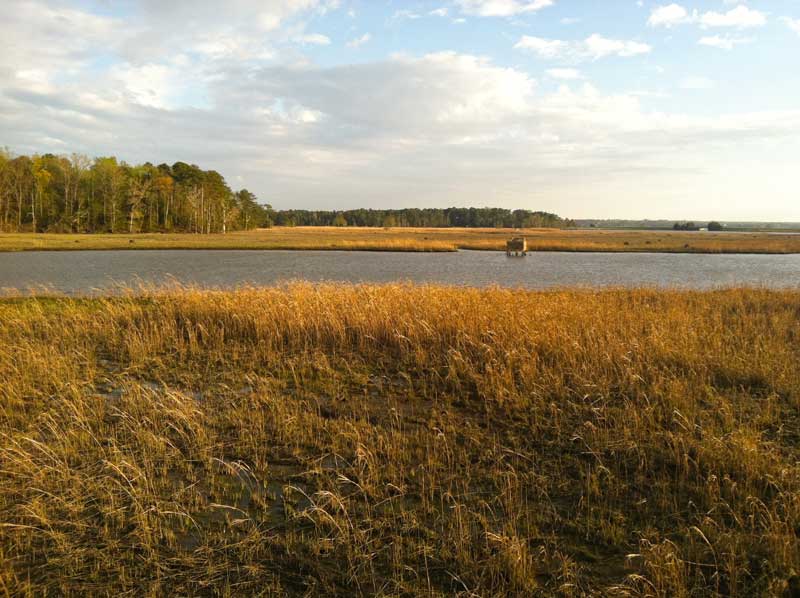
Smithfield is also home to the world-famous Smithfield Ham. Although the original smokehouse has been shuttered and the local company sold to an international conglomerate, there are still plenty of places for you to sink your teeth into a local pork product. While tours of the ham processing plants are not available, Jamie recommends that you visit and tour Darden’s Country Store, shop at Taste of Smithfield (Smithfield Foods’ flagship ham shop), and discover the history of the ham industry at the Isle of Wight County Museum. And of course, dine at one of Smithfield’s local restaurants which feature Smithfield Ham products.
And, if all that salty ham makes you thirsty, you can find a great selection of local beers at Main Street’s Wharf Hill Brewing.
Heading back onto the river and heading north, you’ll round a big bend near Hog Island and come abreast of Colonial Williamsburg with the roller coasters of Bush Gardens clearly visible in the distance. One you pass Hog Island, look for the entrance to Powhaten Creek (on your starboard) and tie up at James City County Marina. From there, it’s a bit of a hike across the bridge to Jamestown Island.
Near the site of the original colony, Jamestown Settlement tells the story of 17th century Virginia, from the arrival of English colonists in Jamestown in 1607 to the cultural encounters and events that planted the seeds of a new nation. The world of Jamestown, America’s first permanent English colony, comes to life through film, gallery exhibits, and outdoor living history.
Historic Jamestown is the cultural heritage site that was the location of the 1607 James Fort and the later 17th century city of Jamestown. Here, you can stroll around a number of archaeological digs, some of which are ongoing. With a little planning, you can even take guided tours and discover your own part of Jamestown history. You’ll want to plan two to three hours for your Jamestown Settlement exploration.
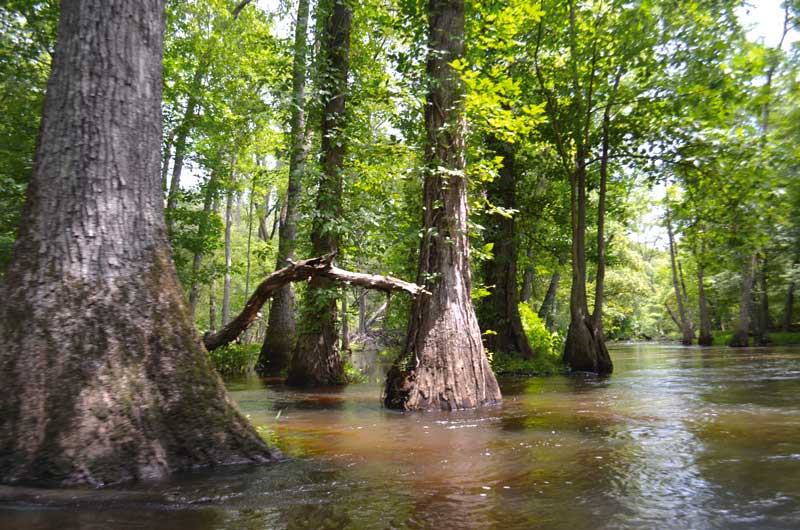
Once back on your boat, take the Hole in the Wall shortcut to rejoin the River and shoot across to Grey’s Creek and take a slip at the new Surry County Marina. There, you’ll find a host of amenities, most importantly the Surry Seafood Company restaurant, known for its James River oysters Rockefeller, she-crab soup, and jalapeno hush puppies.Yum.
Jamie recommends you overnight at Grey’s Creek and head out early the next morning for a trip up the Chickahominey River, the entrance to which is six miles upstream on your starboard.
“The ‘Chick’ is one of my favorite stretches of water,” Jamie says. “It’s a great river to explore, and it offers a number of places you can drop the hook and launch a kayak or dink and really get back to nature.”
Jamie recommends exploring any of the creeks you encounter on your run up to Walker’s Dam (about 15 miles). “Much of the ‘Chick’ drains swamp lands, so the water is tea colored. Gordon creek is one of my favorite paddles. It’s a maze of grasses, so it’s fun to get lost and pretend you were exploring it 200 years ago.”
If you want to spend the night on the ‘Chick’, Jamie recommends River’s Rest Marina. “It’s a great spot to relax, and the Blue Heron Restaurant serves up some great eats.” He recommends the bacon-wrapped, pan-fried dates, olive oil poached ahi tuna, and Mediterranean-inspired seafood stew.
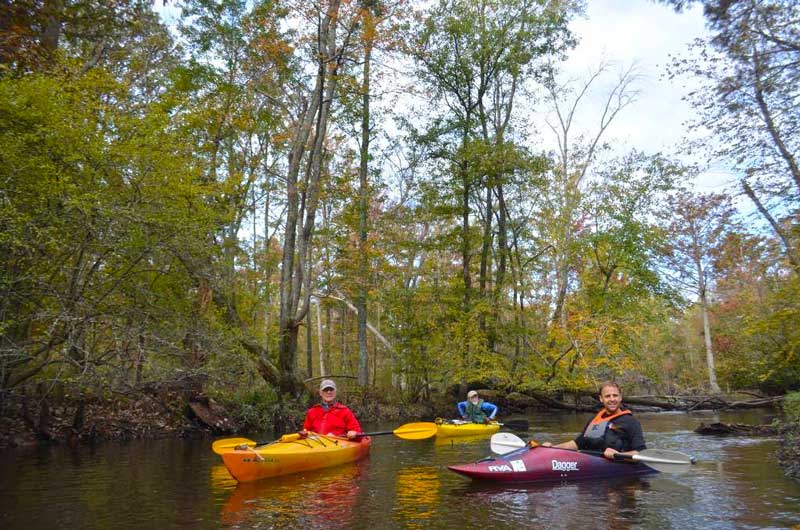
A 40-mile trip up river from the “Chick” to Richmond is well worth the time it takes to explore further afield. “You can go all the way up to the 14th Street Bridge in Richmond before the rapids force you to stop,” Jamie says. He recommends the Rocketts Landing Marina as a great place to headquarter if you want to stay awhile and explore Virginia’s Capital city.
On the way back down the river, Jamie expounds, don’t forget to take in the historic plantations that line the river’s banks.
“You can’t put in at any of the plantations,” he says, “but if you take a slip at the Jordan Point Yacht Haven in Hopewell, the dockmaster will be glad to arrange transportation to the majestic Shirley Planation located a short car ride across the 156 Bridge.
Keep a sharp eye for the Westover Plantation around Charles City. “It’s one of the state’s prettiest,” Jamie says,” and you can see a lot of it from the water.”
The James ranks near the Mississippi in its significance during the American Civil War. Confederates moved materials such as pig iron and coal from Virginia’s Shenandoah Valley and Piedmont regions to the capital. After the loss of Norfolk, Richmond became the state’s major port, naval base, and shipbuilding facility.
South and east of Richmond, the river saw significant combat, including actions between the Union and Confederate navies. The area was a major supplier of the outer sheeting for the Confederacy’s ironclad vessels.
In 1864, in a remarkable feat of nautical engineering, Union General Ulysses S. Grant moved the 100,000-plus man Army of the Potomac across the James River via a 2100-foot pontoon bridge, escaping detection by the Confederates until the Union soldiers were within rifle range of the Rebel stronghold, Petersburg.
For Civil War history buffs, an interesting side trip as you head back down river is a stop at Grant’s Virginia headquarters at City Point. After he crossed the James River, Grant set up shop here while his troops conducted a brutal nine-month siege of Petersburg, eight miles to the north. The Hopewell City Marina at the confluence of the Appomattox River and the James River affords the transient an opportunity to tie up and explore the rich history of the area.
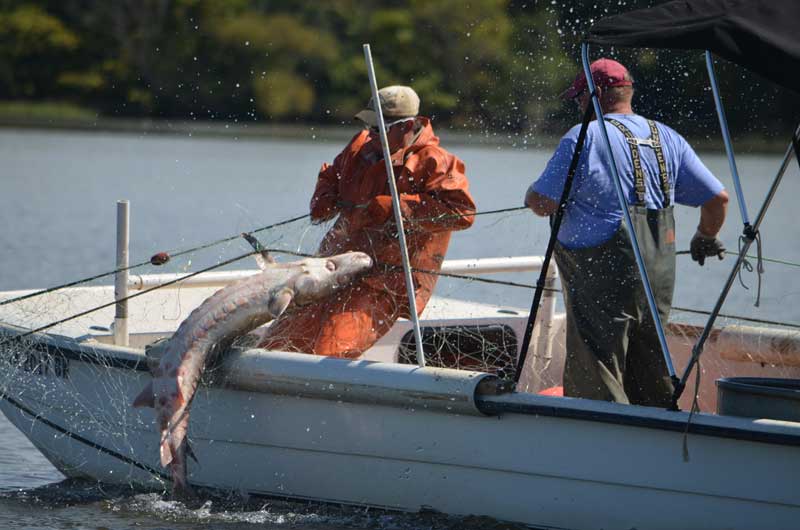
Jamie advises PropTalk readers to be advised of an unusual navigational hazard from late July to early October. “That’s when the Atlantic sturgeon migrate up the river to spawn. Thousands of these prehistoric-looking creatures head upstream. They’re thick as thieves between Hopewell and Richmond. In addition to being cool to see, they often present a danger to boaters inasmuch as they’ll react to the sound of engines and leap up in front of your boat and every now and then land inside passing vessels and do considerable damage.”
A close encounter with a 50-pound sturgeon notwithstanding, Jamie recommends the powerboater plan a trip of at least three or four days to cover most of the itinerary described above.
“I’ve been working and boating on the James for most of my life,” he says, and I haven’t scratched the surface of the places to go, things to see and good times to be had.”
If you see Jamie on the River in his Riverkeeper’s skiff, be sure to give him a wave and tell him PropTalk sent you!
Note: As with all things in this age of Covid-19, be advised that some of the resources listed above may have reduced hours/limited capacity. Please check before you go!
By Craig Ligibel